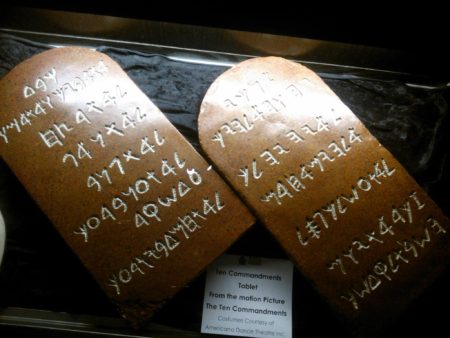The following correspondence originally took place upon my Facebook wall…
Stephen K.: Your thoughts, Rayn? Do they make sense?
Rayn: The above inscription looks to be written mostly in Middle Semitic “Moabite” script, which is a very slight variation of Middle Semitic “Paleo-Hebrew” that holds many of the same exact characters. The reason I believe it to be this particular Semitic script is because it’s the only one I know of that writes out the letter “waw” (“ו” in modern Hebrew) like a “Y,” and the letter “kaph” (“כ” and “ך” in modern Hebrew) like a “Y” with an extra branch emerging from the center (imagine a “☮ ,” minus the circle, and turned 180°). However, the letter “hhet” (now called “chet” and written as “ח” in modern Hebrew) and the letter “sin,” (now called “samekh” and written as “ס” in modern Hebrew) are both written in Paleo-Hebrew, instead of Moabite. Meanwhile the “lam” (now called “lamed” and written as “ל” in modern Hebrew) often jumps between Moabite and Early Semitic “Ancient Hebrew”… (Click Here to Continue Reading This Post)








